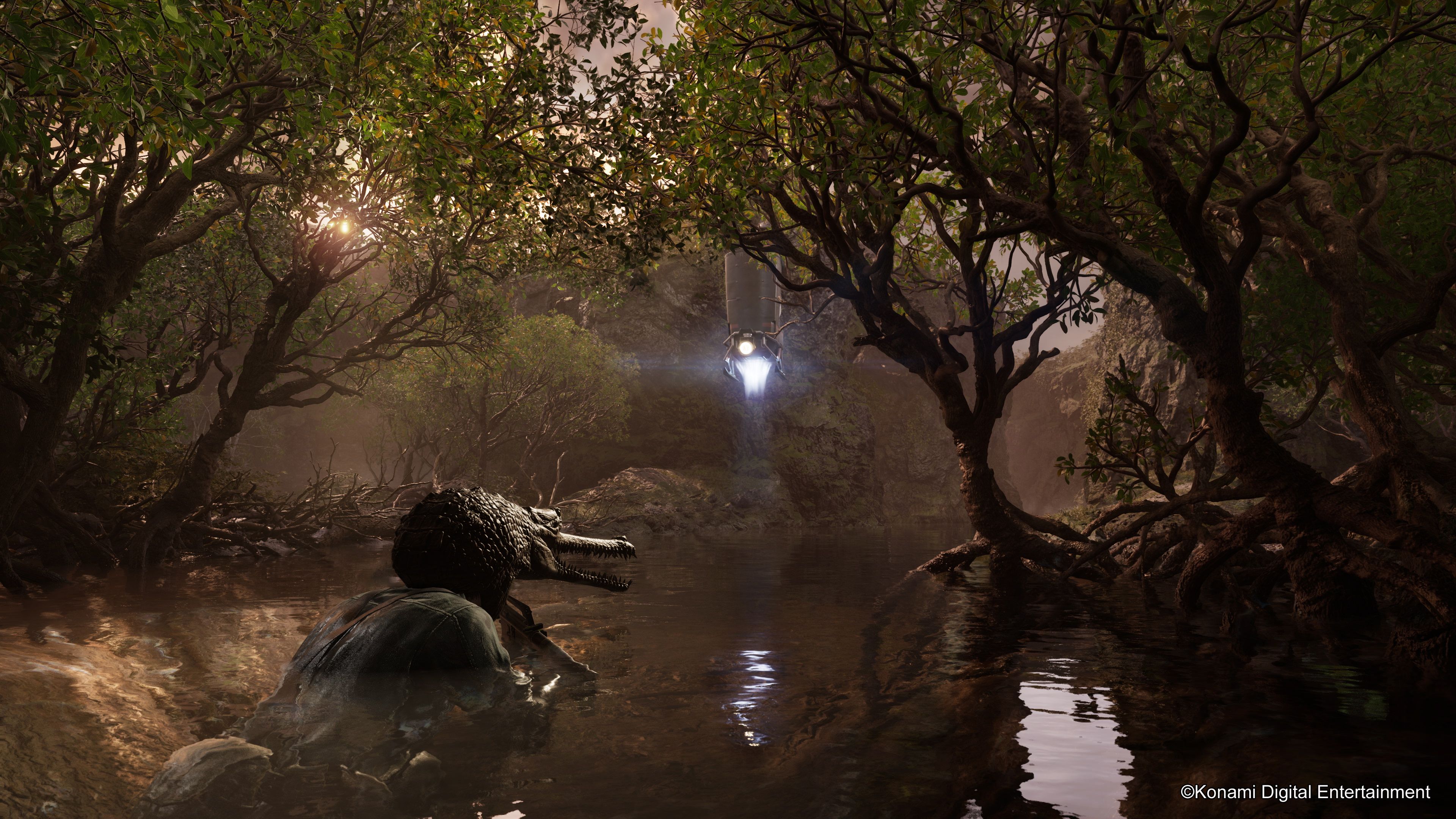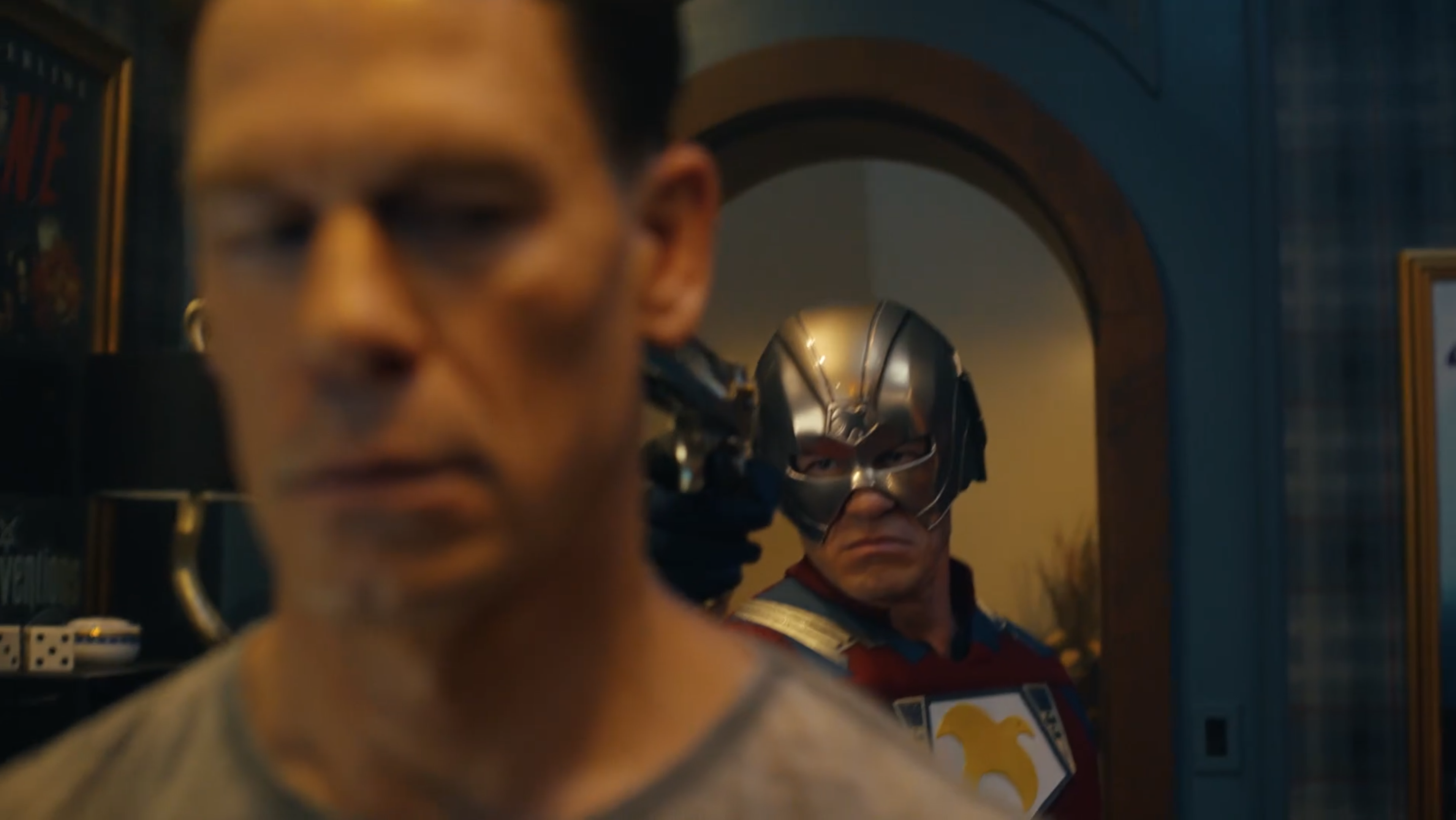Konami’s latest release of Metal Gear Solid 3: Snake Eater bucks a trend when it comes to glossy modern remakes of beloved games. Rather than reinterpret the original game’s meaning, analyze it through the lens of its reception and place in time, and surprise fans with something original, the developers of Metal Gear Solid Delta: Snake Eater play it relatively safe.
Delta is a remake in a very pure sense: Konami has updated the game’s graphics with incredible detail and modernized controls and UI elements to make the 21-year-old Snake Eater feel brand-new. But it hasn’t touched its Cold War story, cast of memorable characters, or much of the stealth-action gameplay. Konami has instead painstakingly rebuilt it.
It’s a solid (ahem) remake, but there’s also a timidness to Metal Gear Solid Delta, either due to reverence for the original source material or to avoid irking series creator Hideo Kojima and the gaming auteur’s legion of fans. And you can see Kojima’s name prominently in Delta. Upon starting the game, you’re presented with a warning that certain elements of the game may feel out of date, but that Delta’s developers wanted to preserve the original creators’ ideas. The title movies credits acknowledge many members of the original development team, and explicitly mention that Delta is “based on Metal Gear Solid 3.”
But once you get into the action — which, admittedly, takes a while, because the game is frontloaded with exposition — you’ll find the Metal Gear Solid 3 you remember, only much better looking. Delta’s jungle environments in the early game are rendered beautifully. Characters, including Snake, Eva, and The Boss, look spectacular, richly rendered in a way that makes them look more photorealistic than ever, but still stylized in Metal Gear Solid’s aesthetic.
Metal Gear Solid Delta presents players with a wealth of difficulty and gameplay options at the start of the game. You can choose to play the “Legacy” over-the-head style of camera and controls from in the early Metal Gear Solid games, or a modernized “New Style” that changes camera and control settings to play it like a contemporary third-person shooter. I played through the game on New Style, and found it much more enjoyable, if sometimes more challenging, particularly when it came to staying hidden.
The game’s story, set after the events of the Cuban Missile Crisis, is as previously mentioned unchanged. Snake (aka Jack, aka Naked Snake) is dropped into Soviet territory to exfiltrate a Russian scientist who has built a new type of weapon that could change the course of the Cold War. One betrayal and one rogue nuclear detonation later, Snake’s mission changes, and he’s charged with taking down his old mentor while also trying to quietly prevent global nuclear war.
Snake’s relationship with his mentor, The Boss, is complex and compelling, and the best part of Metal Gear Solid Delta’s story. As is common in Kojima’s games, much of that story is told through exhaustive, well-acted cutscenes (which can be skipped, if necessary) and radio calls between Snake, his support team, and rivals on the battlefield. The game is dense with plot and intrigue, and the dramatically staged cutscenes from the original are lovingly recrafted in Delta with incredible attention to detail (and slavishness to the original).
Likewise memorable are the game’s villains, Colonel Volgin and his team of military commandos the Cobra Unit, whom Snake must take down one by one. Each member of the Cobras boasts an outsized personality and some hugely enjoyable gimmicks: Marksman The End is a sleepy centenarian with bug eyes who is allegedly the world’s best sniper. The Pain controls an army of hornets with mind control, using them as weapons and armor. The Fear is a forked-tongue stealth expert who moves like a spider thanks to elective surgery. And so on. Each Cobra is a puzzle to be solved using Snake’s arsenal of weapons, stealth techniques, and special gadgets. Boss battles involving the Cobras often have multiple clever solutions, ranging from “shoot him with a rocket launcher until he dies” to more meta strategies.
Many of the techniques and weapons that Snake can employ on the battlefield in Delta are common throughout Metal Gear Solid games. Snake can hide in cardboard boxes to conceal himself from enemy soldiers or quietly tranquilize them with a sleep dart. Snake Eater introduced several new gameplay features, including a camouflage system, a survival system, and a stamina system that requires Snake to regularly feed himself, all of which are recreated in Delta.
Snake can mask himself even out in the open with Delta’s camouflage system, swapping between various uniform patterns and face paints to blend in with his surroundings (a onscreen indicator shows how well-hidden Snake is at any time). Lie prone with the right camo equipped, and he’ll be virtually invisible.
If Snake is detected, his best recourse is to fight in close-quarters combat, or CQC. Snake can quickly knock out foes, take them hostage to interrogate them or use them as human shields. Your other option, if detected, is to quickly reload the game, which is easier than ever thanks to fast modern loading times and generous autosaving. (I save-scummed a lot through my playthrough, and I have no shame.)
If Snake is injured, he’ll gradually recover health over time. Serious injuries, like burns and bullet wounds, are self-treated through a simple menu system that lets Snake patch himself up, even mid-fight. Delta provides ample survival items throughout the game, at least on standard difficulty, and plenty of food to eat to keep Snake’s stamina up.
Stamina recovery involves snacking on virtually anything and everything Snake can find in the jungle: snakes, rats, tarantulas, mushrooms, and the occasional package of instant ramen. Hunting and eating is a fun system to experiment with; hearing Snake’s reaction to eating various wildlife is great fun — thank you, David Hayter — and there’s a collect-a-thon aspect to finding everything edible throughout Snake Eater. It’s fun to experiment with the positive and negative effects of eating.
Metal Gear Solid Delta is a reminder that experimentation is the beating heart of the MGS franchise. Like other Metal Gear games, you can play through the whole thing in a non-lethal way, relying on tranquilizers and choking out enemies to dispatch most of them. You can also exploit the environment, throwing poisonous snakes at enemies or shooting down beehives to cause chaos. Puzzling out what Snake’s equipment and what the environment can do, particularly in Delta’s dynamic boss battles, is much of the fun.
Metal Gear Solid Delta does an admirable job of making Metal Gear Solid 3 feel timeless, thanks in part to its Cold War setting and anti-nuclear war message. But some aspects of Snake Eater haven’t aged so well, namely Kojima’s penchant for creepy, leering camera angles and finding every opportunity to undress the game’s Bond Girl equivalent, Eva. That’s common throughout the Metal Gear series, so if you’ve made your peace with it, you won’t find anything new to fret about here.
Outside of the game’s story-based campaign, there’s some side stuff to do, including the gotta-catch-’em-all arcade minigame Snake vs. Monkey, in which Snake is tasked with tracking down the apes from Sony’s Ape Escape series. (On Xbox, Snake’s chasing Bomberman.) Delta adds a new twist to this silly, high-score-focused diversion: Astro Bot is here too as a catchable rascal, and hidden throughout Snake vs. Monkey levels to up the challenge.
Beyond that, there are sundry modern conveniences and extras in Metal Gear Solid Delta, like a photo mode, a theater to watch videos, and special outfits to unlock, many of them very amusing. Another mode, the online multiplayer hide-and-seek game Fox Hunt, is promised but not available at launch.
Metal Gear Solid Delta breathes new life into Snake Eater, making the classic Cold War stealth adventure look and play better than ever. Konami has said that it’s starting its Metal Gear Solid remake plans with Snake Eater, specifically because of its chronological place in the franchise. Based on how well Delta turned out, I’m excited to see where Konami’s remake resources go next, hoping for more lavishly polished remakes of games that, at least mechanically, may not hold up so well. But I also hope that Konami exhibits a bit more confidence next time, and takes more chances with Kojima’s work. He’s moved on, and so should the team overseeing the future of Metal Gear.
Metal Gear Solid Delta: Snake Eater will be released on Aug. 26 on PlayStation 5, Windows PC, and Xbox Series X. The game was reviewed on PlayStation 5 using a prerelease download code provided by Konami. You can find additional information about Polygon’s ethics policy here.


![22nd Aug: Radiation House (2019), 12 Episodes [TV-14] (5.95/10)](https://occ-0-1381-999.1.nflxso.net/dnm/api/v6/Qs00mKCpRvrkl3HZAN5KwEL1kpE/AAAABSkk_r5ZIw7tLa0Ca7aPmfcFRoCqZIhIDg2Mi_rlaaXzsxC0AEVIPoFYRTnELp6ACBz_RF7oOcAas3lWliE9WlCsZLDYYaml85scy_t9ag5mqrgIXpGArrFmA4cjTV690xhM7nYmV9pM8loDECQgDcNaC4xhL1mkYQJ6Eri61QEMcA.jpg?r=023)














